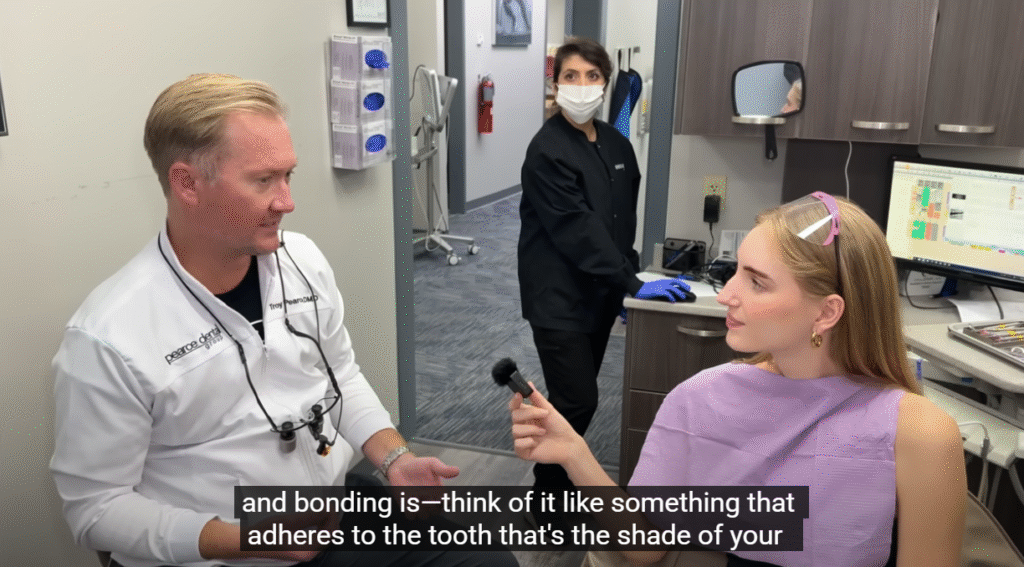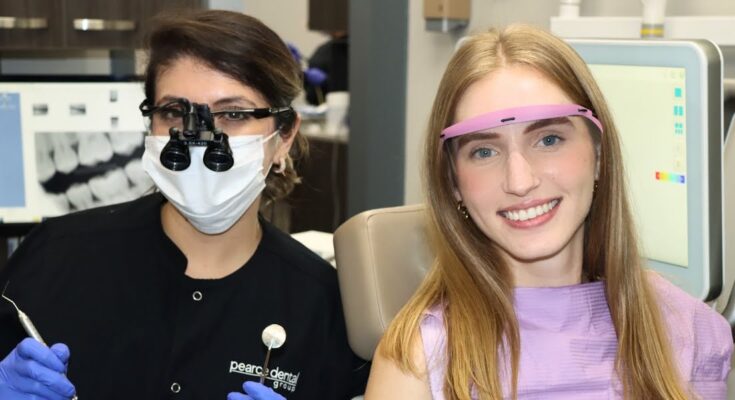Learning English doesn’t always have to happen in a classroom. In fact, some of the most useful English lessons take place in everyday situations—like a visit to the dentist. That’s right! Whether you’re going in for a regular check-up or getting a cavity filled, the dentist’s office can become an unexpected but perfect place to practice English. You’ll hear new vocabulary, have short conversations, and use practical phrases that help you become more confident in real-life situations.
In this 1000-word article, let’s explore how to turn a simple dental visit into a valuable English lesson.

Arriving at the Dentist’s Office
Your English lesson begins the moment you walk through the door. The front desk is your first stop, and you’ll be greeted with common phrases like:
- “Good morning! Do you have an appointment?”
- “What time is your appointment?”
- “Can I have your name, please?”
- “Please have a seat. The dentist will be with you shortly.”
These polite and helpful phrases are perfect for practicing English greetings and introductions. When you respond, try using full sentences:
- “Yes, I have an appointment at 10:00 a.m. My name is Anna.”
- “No, I don’t have an appointment. Can I schedule one?”
- “I’m here for a dental cleaning.”
This short conversation helps you improve your listening and speaking skills, all while doing something important for your health.

Filling Out Forms
Before seeing the dentist, you may be asked to fill out some forms. These forms usually ask about:
- Your personal information (name, date of birth, address)
- Insurance details
- Medical history (allergies, medications, past surgeries)
- Dental concerns (pain, sensitivity, past procedures)
This is a great way to learn vocabulary related to health and the human body. Words like gums, teeth, numb, cavity, toothache, jaw, braces, and filling will appear on these forms or be mentioned during your visit.
Pay attention to questions like:
- “Do you have any allergies?”
- “Are you currently taking any medication?”
- “Have you had any dental problems recently?”
Even reading and answering these questions gives you great practice in reading comprehension and writing in English.

Meeting the Dentist or Dental Assistant
Once you’re called in, you’ll meet a dental assistant or hygienist. They might say:
- “Hi! How are you today?”
- “Please take a seat in the chair.”
- “We’ll start with a quick check-up.”
- “Let me put a bib on you to keep your clothes clean.”
These are everyday instructions that help you understand polite commands in English. Don’t be afraid to ask questions:
- “What are you going to do first?”
- “Will this hurt?”
- “Can you explain what you’re doing?”
These kinds of questions improve your ability to communicate clearly and confidently.
Common Vocabulary at the Dentist
Here are some useful dental words and phrases you might hear:
| Word/Phrase | Meaning |
|---|---|
| Cavity | A hole in a tooth caused by decay |
| Filling | Material used to fix a cavity |
| Toothache | Pain in or around a tooth |
| Plaque | Sticky film of bacteria on teeth |
| Braces | Metal wires to straighten teeth |
| Floss | Thin thread used to clean between teeth |
| Gums | Soft tissue around the base of teeth |
| Numb | No feeling, often caused by anesthesia |
| X-ray | A photo of your teeth and jaw |
| Extraction | Removal of a tooth |
These words are not only useful for dental visits, but they also expand your general English vocabulary.

The Check-Up: Listening Practice
During the dental check-up, the dentist will likely talk to you about what they’re doing. They may use phrases such as:
- “Open wide, please.”
- “You might feel a little pressure.”
- “Your gums look healthy.”
- “You have a small cavity on your molar.”
- “We’re going to take an X-ray.”
- “I’ll numb the area before we start the filling.”
This part of the visit is excellent for listening practice. The dentist will speak clearly and directly, using terms that describe actions and body parts. Try to listen carefully and ask questions if you don’t understand something:
- “Can you repeat that, please?”
- “What is a molar?”
- “Do I need to do anything after this?”
After the Appointment: Follow-Up Instructions
Once the check-up or procedure is done, the dentist or assistant will give you instructions in English. You might hear:
- “Don’t eat or drink until the numbness wears off.”
- “Take this medicine if you feel pain.”
- “Brush gently and floss daily.”
- “Schedule a follow-up visit in six months.”
- “Let us know if you feel any discomfort.”
This part helps you practice understanding directions in English. If you don’t understand, it’s okay to ask:
- “How many times should I take the medicine?”
- “Can I eat today?”
- “When should I brush my teeth again?”
Booking Your Next Appointment
As you leave, you may want to schedule your next visit. Here are some helpful phrases to use:
- “Can I book my next cleaning?”
- “I’d like to schedule a follow-up.”
- “What dates are available?”
- “Can I come on a Saturday?”
Receptionists will respond with options and confirm your details. This gives you more experience with dates, times, and polite conversation.

Practicing at Home
After your dental visit, you can review what you heard and learned. Here are some ways to keep improving your English:
- Write a short diary entry: “Today I went to the dentist. He said my teeth look good. I need to floss more.”
- Make flashcards of dental vocabulary.
- Watch YouTube videos in English about dental hygiene.
- Practice dialogues with a friend or teacher: pretend one of you is the dentist, and the other is the patient.
Conclusion
A trip to the dentist might seem routine, but it’s actually a wonderful opportunity to learn and practice English. From filling out forms to talking with the receptionist, to listening to instructions during your check-up, every step helps you grow more confident with the language.
You don’t need a textbook or a grammar lesson to learn English—you just need to live it. And what better way to do that than by combining health with education?
So next time you book a dental appointment, go in with more than just your toothbrush. Bring your curiosity and your willingness to learn. You’ll walk out with a cleaner smile—and a stronger command of the English language!
🦷💬🇬🇧



